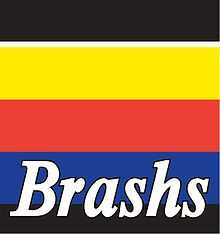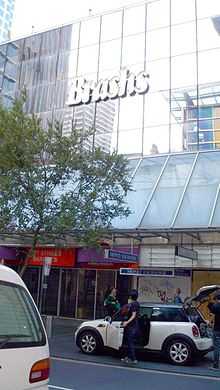Brashs

Brashs was one of Australia's biggest music retail chains, specializing in the retail of various vinyl records and CDs, blank audio cassettes and other accessories during the 1970s, 1980s and 1990s. The first Brashs stores were established in 1895, at the time just selling Pianos.
History
Brashs first opened in 1862 at 108 Elizabeth Street Melbourne. Originally they were retailers of pianos and other musical instruments. Later they would expand their product line to include sheet music. By the 1970s, Brashs expanded further, adding vinyl records, pre-recorded and blank cassettes to their line. From the mid-1980s, CDs started appearing in its stores, and by the 1990s, its product base expanded to selling Hi Fi stereos, video cassette recorders, microwaves, televisions and white goods.
Operations

On Saturday 6 December 1986, Brashs opened Australia's first major megastore at 244 Pitt Street Sydney. This address now forms part of the Plazza of the ANZ Bank Centre.
Brashes was a company listed on the Australian Stock Exchange. In 1995 the Brashs retail chain was placed into voluntary administration. It was delisted and shareholders did not receive any return. Subsequently it was purchased by the Singapore based businessman Ong Beng Seng at a cost of $40 million.[1] During February 1998, the chain fell into receivership with debts owing of $80 million, which was managed by accountancy firm KPMG. At that time the Brashs chain had 105 outlets, employing over 2,000 staff members.[2]
Marketing
Brashs mainly used television advertising and print for promoting their sales and products. During the late 1980s and early 1990s, Australian television personality Tony Barber appeared in most of the stores television promotions, when announcing sales on audio and video equipment.[3]
Brashs promoted its products with two print marketing strategies; product catalogues and the "Music" magazine.
The first was the regular release of sale catalogues that were available in-store.[4] These catalogues mainly covered the Hi-Fi, audio, video, whitegoods, and blank audio and video product lines.